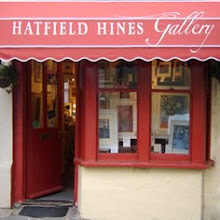 This week, a dark myth of 'celeb' culture exploded onstage at Norwich's Theatre Royal, in Matthew Bourne's latest dance spectacle: the ultra-stylish black-and-white fairy-tale, Dorian Gray.
This week, a dark myth of 'celeb' culture exploded onstage at Norwich's Theatre Royal, in Matthew Bourne's latest dance spectacle: the ultra-stylish black-and-white fairy-tale, Dorian Gray.The production (based loosely on the 1890s gothic masterpiece which finally did for Oscar Wilde) - sees Dorian reinvented for the noughties as a fame-hungry waiter-on-the-make.
 Discovered by fashionista Lady H. (Bourne's vampification of Wilde's corrupting mentor, Lord Henry Wotton) and top photographer Basil (played by Taverham's own Aaron Sillis), Dorian is catapulted to fame amidst the glitterati as poster-boy for new men's frangrance 'Immortal'.
Discovered by fashionista Lady H. (Bourne's vampification of Wilde's corrupting mentor, Lord Henry Wotton) and top photographer Basil (played by Taverham's own Aaron Sillis), Dorian is catapulted to fame amidst the glitterati as poster-boy for new men's frangrance 'Immortal'.  As Gray's billboard image (which replaces the portrait in the original tale) becomes an icon of youth and purity, celebrity snares him in a fraught bisexual triangle. This plays out through a revolving set which carries the audience on an odyssey from bedroom to bathroom, from gallery to studio and from opera house to posh party. As Gray's fame grows, his poster crystalizes into an evil doppelganger and the stud-made-good embarks on a one-way journey of debauchery, drug-fuelled excess, and murderous rampage.
As Gray's billboard image (which replaces the portrait in the original tale) becomes an icon of youth and purity, celebrity snares him in a fraught bisexual triangle. This plays out through a revolving set which carries the audience on an odyssey from bedroom to bathroom, from gallery to studio and from opera house to posh party. As Gray's fame grows, his poster crystalizes into an evil doppelganger and the stud-made-good embarks on a one-way journey of debauchery, drug-fuelled excess, and murderous rampage. Bourne, in his 21st year in the business, admits that this unsympathetic piece - which has met with much negativity from reviewers - is 'different' to his usual productions - including the celebrated all-male Swan Lake and double Olivier-winning Play Without Words.
Bourne, in his 21st year in the business, admits that this unsympathetic piece - which has met with much negativity from reviewers - is 'different' to his usual productions - including the celebrated all-male Swan Lake and double Olivier-winning Play Without Words.  However, audiences have disagreed with the critics in their droves: August's sell-out premiere performances in Edinburgh made Dorian the biggest dance hit in the Festival's history. In Norwich's smash run, the audience - which included comedian Stephen Fry - was similarly enthralled, as the Calvin-Klein-clad company of 11 played out their homoerotic horror-story of vanity, violence and serial-killing. Definitely not one for the squeamish!
However, audiences have disagreed with the critics in their droves: August's sell-out premiere performances in Edinburgh made Dorian the biggest dance hit in the Festival's history. In Norwich's smash run, the audience - which included comedian Stephen Fry - was similarly enthralled, as the Calvin-Klein-clad company of 11 played out their homoerotic horror-story of vanity, violence and serial-killing. Definitely not one for the squeamish!Click on the link below for a full-length audio interview with Adam Sillis:
Listen: Feature-length interview with Aaron Sillis





 Especially for the Festival, the Mercedes played host to The East Norfolk Militia. The local re-enactment group brought the sights, sounds, smells (and smoke!) of the 1800s vividly to life in a crimson-clad quayside parade which included drills, bayonet charges and live musket practice.
Especially for the Festival, the Mercedes played host to The East Norfolk Militia. The local re-enactment group brought the sights, sounds, smells (and smoke!) of the 1800s vividly to life in a crimson-clad quayside parade which included drills, bayonet charges and live musket practice.









